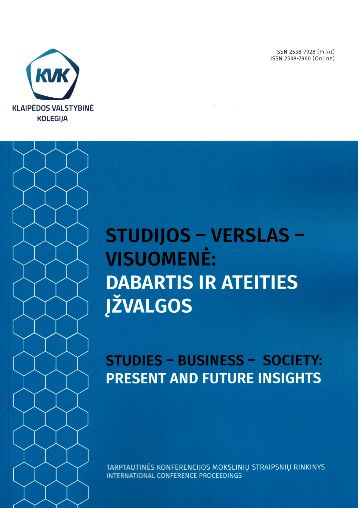FROM DIGITAL ABORIGINAL TO HOMO RIDEN: THE DIGITALIZATION – DICTATED DISCOURSES OF MEDIA AUDIENCE IN SCIENTIFIC LITERATURE
DOI:
https://doi.org/10.52320/svv.v1iVII.246Keywords:
medias, audience, digitalization, journalismAbstract
This article aims to define the contemporary media audience based on the features and qualities highlighted in the scientific literature. Becoming familiar with their changes and preconditions would allow media content creators and mass media to manage their schedules more effectively, anticipate the impact of their content on the audience and influence their choices, attitudes, and values. The subject of this article is the discourse of media audiences shaped by digitalisation in scientific literature. By reviewing the media audience characteristics highlighted in scientific literature and distinguishing the conditions that determine them, the following objectives were set: to review the media audience terms found in scientific literature, to analyse the preconditions of creating the media audience terms found in scientific literature, and to assess the challenges of changing audiences faced by the media. An integral literature review, based on the provisions of the deductive methodology, as well as structuring and generalisation were used to achieve the goal and accomplish the objectives. The scientific literature insights on media, communication, and public information issues of the last two decades of rapid digitisation are analysed on the basis of communication effect theories, by evaluating their expression in the Lithuanian media.
Media changes due to digitisation are a prerequisite for new media audience discourses. This is how new epithets and metaphors of the audience are born, the origins of which are linked to the beginning of the Internet revolution in 2000. The changing portrait of the media audience and the trends in the structure of the audience are essential determinants of the relationship between public information measures, often referred to as the media, and the audience. The latter is no longer a passive user of the media content. While competing for the audience’s attention, the media must respond to its need to participate in the uninterrupted media process, be its content creator, and shape the media agenda. These challenges are often identified as a consequence of online transformation, in the context of which the audience, forms of media, and content change. However, this transformation also revolves around much older assumptions of media transformation – theories of media effect formed in the 20th century, the expression of which still remains relevant nowadays when assessing audience discourses, shaping the media agenda, and predicting changes in public communication.
Downloads
Published
How to Cite
Issue
Section
License
Copyright (c) 2022 Laura Selenienė

This work is licensed under a Creative Commons Attribution 4.0 International License.
Individual articles are published Open Access under the Creative Commons Licence CC-BY 4.0, which permits unrestricted use, distribution, and reproduction in any medium, provided the original author and source are credited. Authors retain copyright in their articles, but grant Klaipėdos valstybinė kolegija the right of the first publication.

